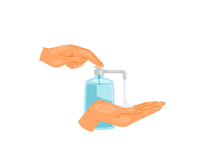Sodium Diatrizoate
Uses of Sodium Diatrizoate
- Enhancing X-ray imaging
- Used in CT scans for better visualization
- Visualizing blood vessels (angiography)
- Detecting blockages, tumors, and internal injuries
How Sodium Diatrizoate Works
Sodium Diatrizoate contains iodine, which absorbs X-rays and enhances the contrast of body tissues and blood vessels on radiographic images, aiding in accurate diagnosis.
Benefits of Sodium Diatrizoate
- Improves clarity of diagnostic images
- Helps detect structural abnormalities
- Assists in accurate medical diagnosis
- Quick visualization of targeted areas
How to Take Sodium Diatrizoate
It is administered by a healthcare professional either orally or via injection depending on the type of diagnostic test. Follow the preparation guidelines provided by your doctor or technician before the procedure.
Type of Dosage Available
- Injection
- Oral solution
Side Effects of Sodium Diatrizoate
- Nausea or vomiting
- Warm sensation or flushing
- Allergic reactions (rash, itching, swelling)
- Headache
- Dizziness
- Kidney issues in rare cases
Safety Advice
- Used under professional medical supervision only
- Inform doctor of allergies to iodine or contrast agents
- Stay hydrated after the procedure to flush the agent
- Inform your doctor if you have kidney or thyroid disorders
- Report any signs of allergic reaction immediately
Frequently Asked Questions (FAQs)
Q. What is Sodium Diatrizoate used for?
A. It is used as a contrast agent in imaging procedures like X-rays and CT scans to improve image clarity.
Q. How is Sodium Diatrizoate administered?
A. It is either injected into a vein or taken orally depending on the type of diagnostic test.
Q. Is Sodium Diatrizoate safe for everyone?
A. It should be avoided in people allergic to iodine or with severe kidney issues. Always inform your doctor beforehand.
Q. Can I eat before taking Sodium Diatrizoate?
A. Fasting may be required depending on the procedure. Follow your doctor `s instructions.
Q. What should I do after the procedure?
A. Drink plenty of fluids to help flush the contrast agent from your body.
Medicine Not Available for Sodium Diatrizoate
Uses of Sodium Diatrizoate
- Enhancing X-ray imaging
- Used in CT scans for better visualization
- Visualizing blood vessels (angiography)
- Detecting blockages, tumors, and internal injuries
How Sodium Diatrizoate Works
Sodium Diatrizoate contains iodine, which absorbs X-rays and enhances the contrast of body tissues and blood vessels on radiographic images, aiding in accurate diagnosis.
Benefits of Sodium Diatrizoate
- Improves clarity of diagnostic images
- Helps detect structural abnormalities
- Assists in accurate medical diagnosis
- Quick visualization of targeted areas
How to Take Sodium Diatrizoate
It is administered by a healthcare professional either orally or via injection depending on the type of diagnostic test. Follow the preparation guidelines provided by your doctor or technician before the procedure.
Type of Dosage Available
- Injection
- Oral solution
Side Effects of Sodium Diatrizoate
- Nausea or vomiting
- Warm sensation or flushing
- Allergic reactions (rash, itching, swelling)
- Headache
- Dizziness
- Kidney issues in rare cases
Safety Advice
- Used under professional medical supervision only
- Inform doctor of allergies to iodine or contrast agents
- Stay hydrated after the procedure to flush the agent
- Inform your doctor if you have kidney or thyroid disorders
- Report any signs of allergic reaction immediately
Frequently Asked Questions (FAQs)
Q. What is Sodium Diatrizoate used for?
A. It is used as a contrast agent in imaging procedures like X-rays and CT scans to improve image clarity.
Q. How is Sodium Diatrizoate administered?
A. It is either injected into a vein or taken orally depending on the type of diagnostic test.
Q. Is Sodium Diatrizoate safe for everyone?
A. It should be avoided in people allergic to iodine or with severe kidney issues. Always inform your doctor beforehand.
Q. Can I eat before taking Sodium Diatrizoate?
A. Fasting may be required depending on the procedure. Follow your doctor `s instructions.
Q. What should I do after the procedure?
A. Drink plenty of fluids to help flush the contrast agent from your body.
Related Salt
Download India's most affordable pharmacy app
- Compare with medicine prices
- Save upto 90% on your medicine bills

Temperature Controlled storage and delivery

Regular Sanitization

Disinfected Packaging









 Added!
Added!